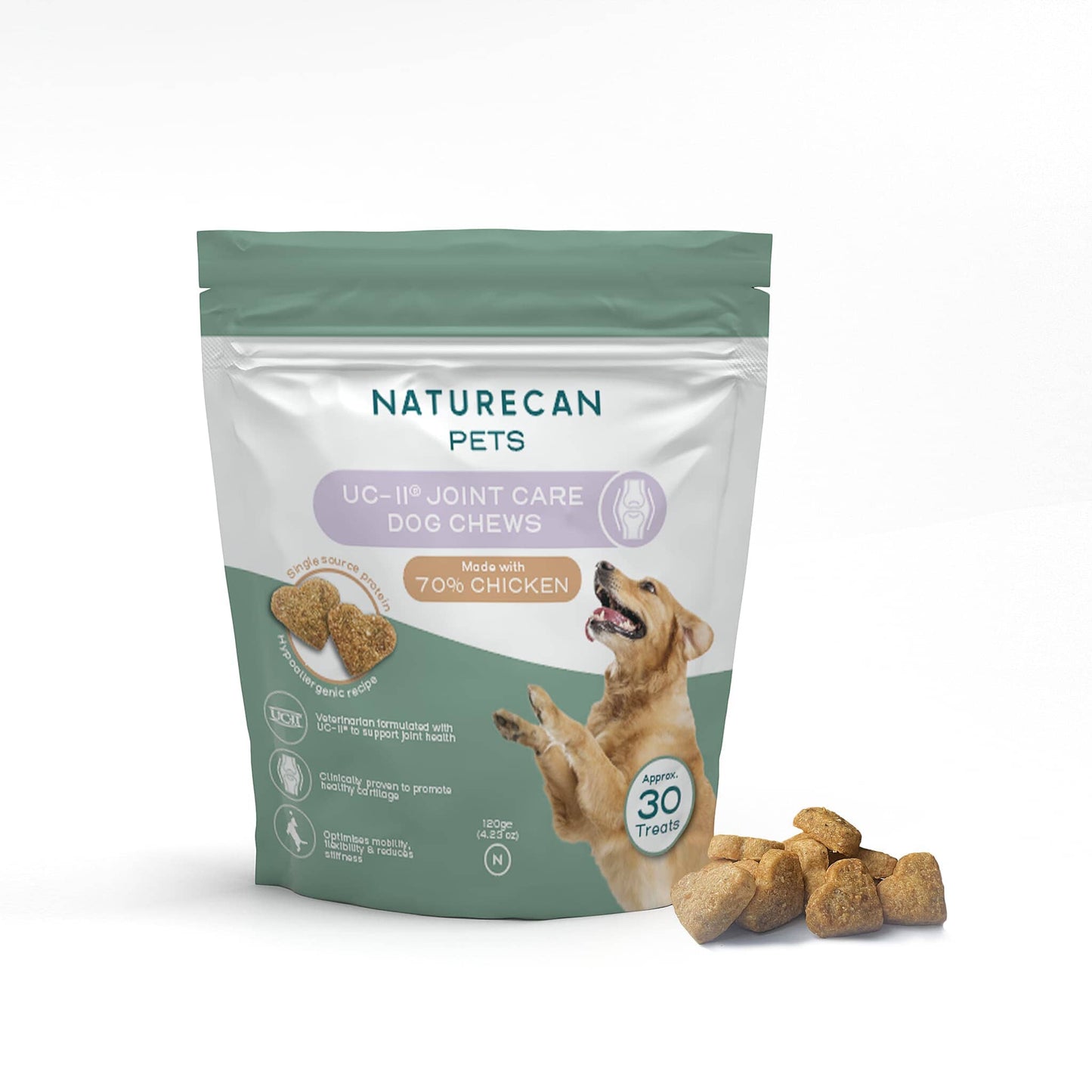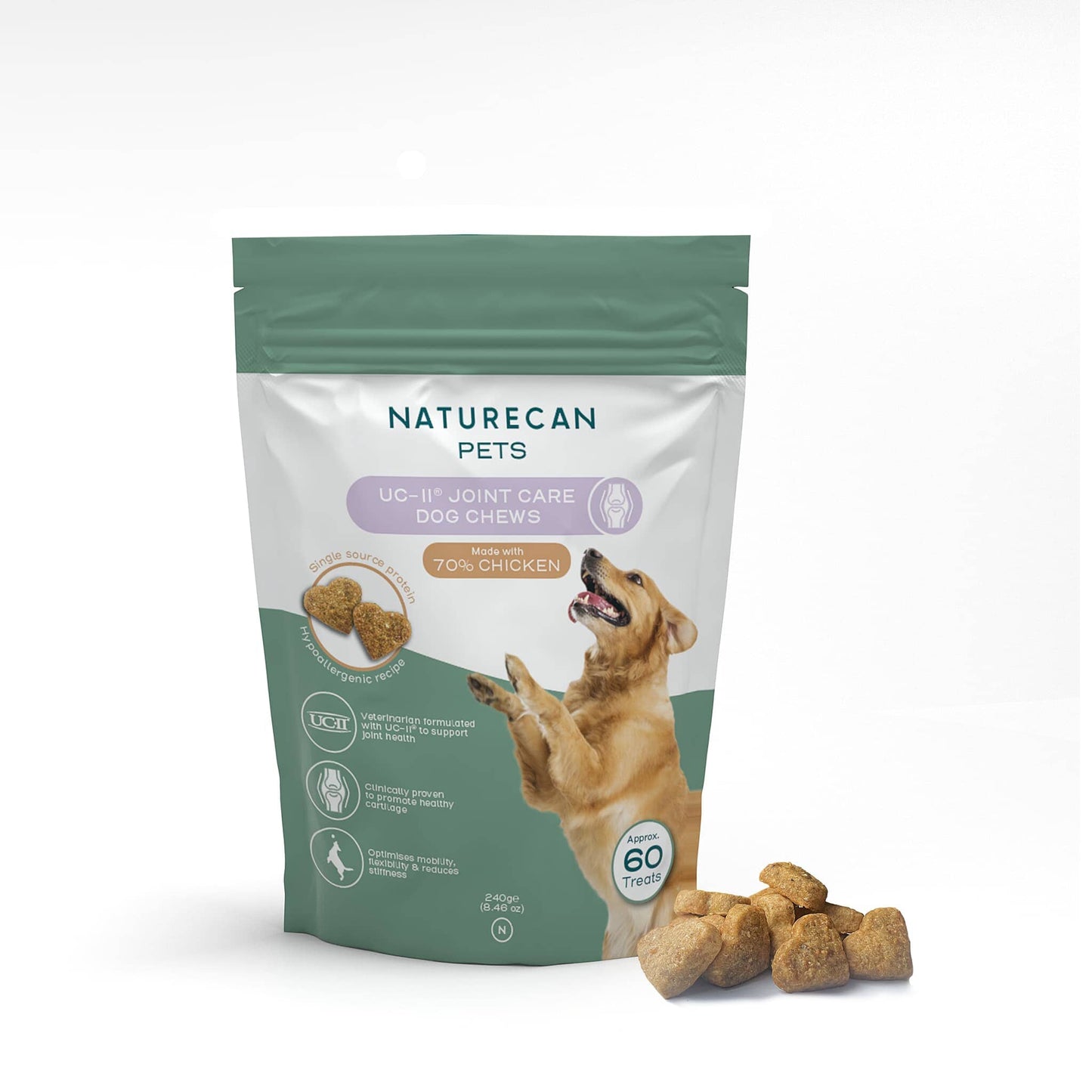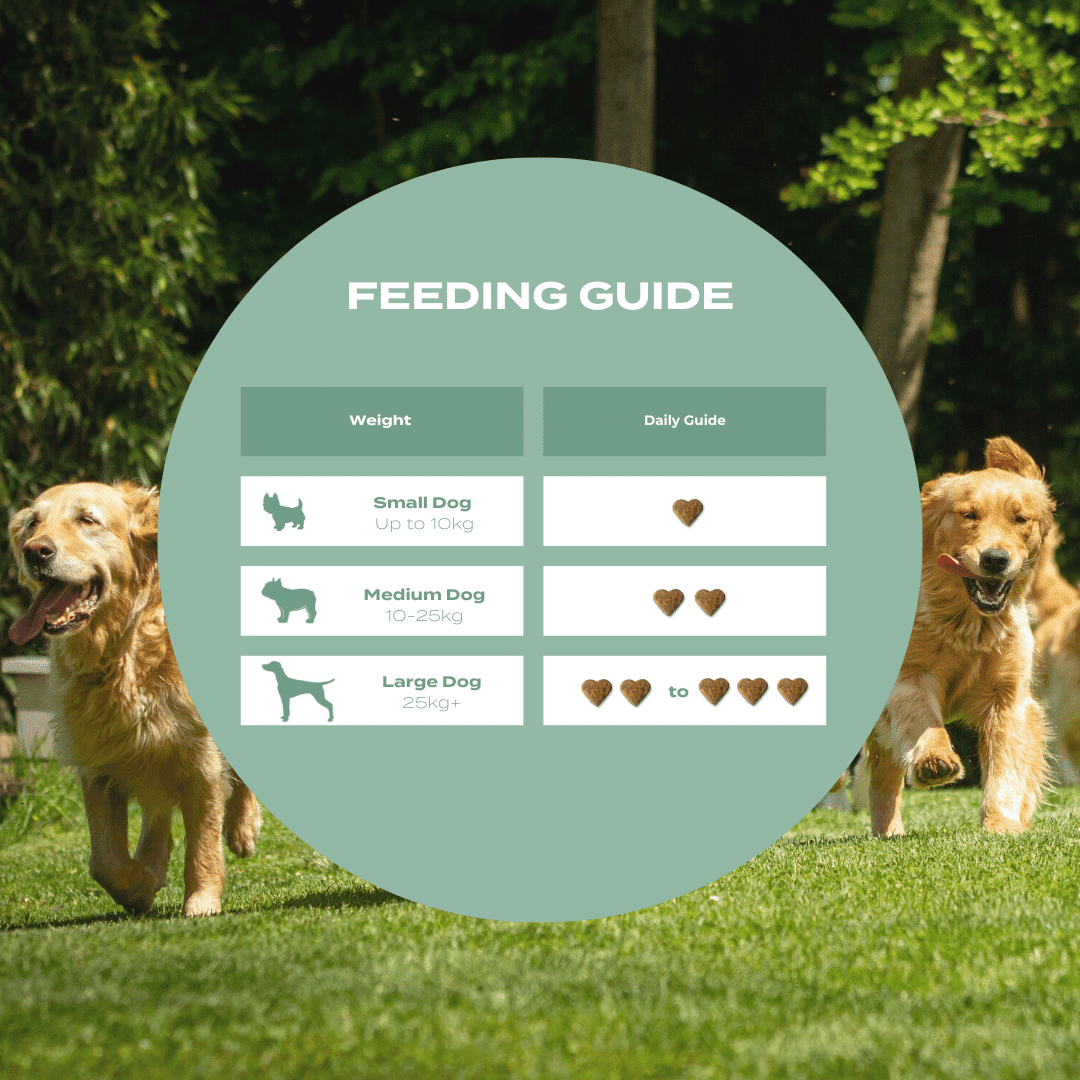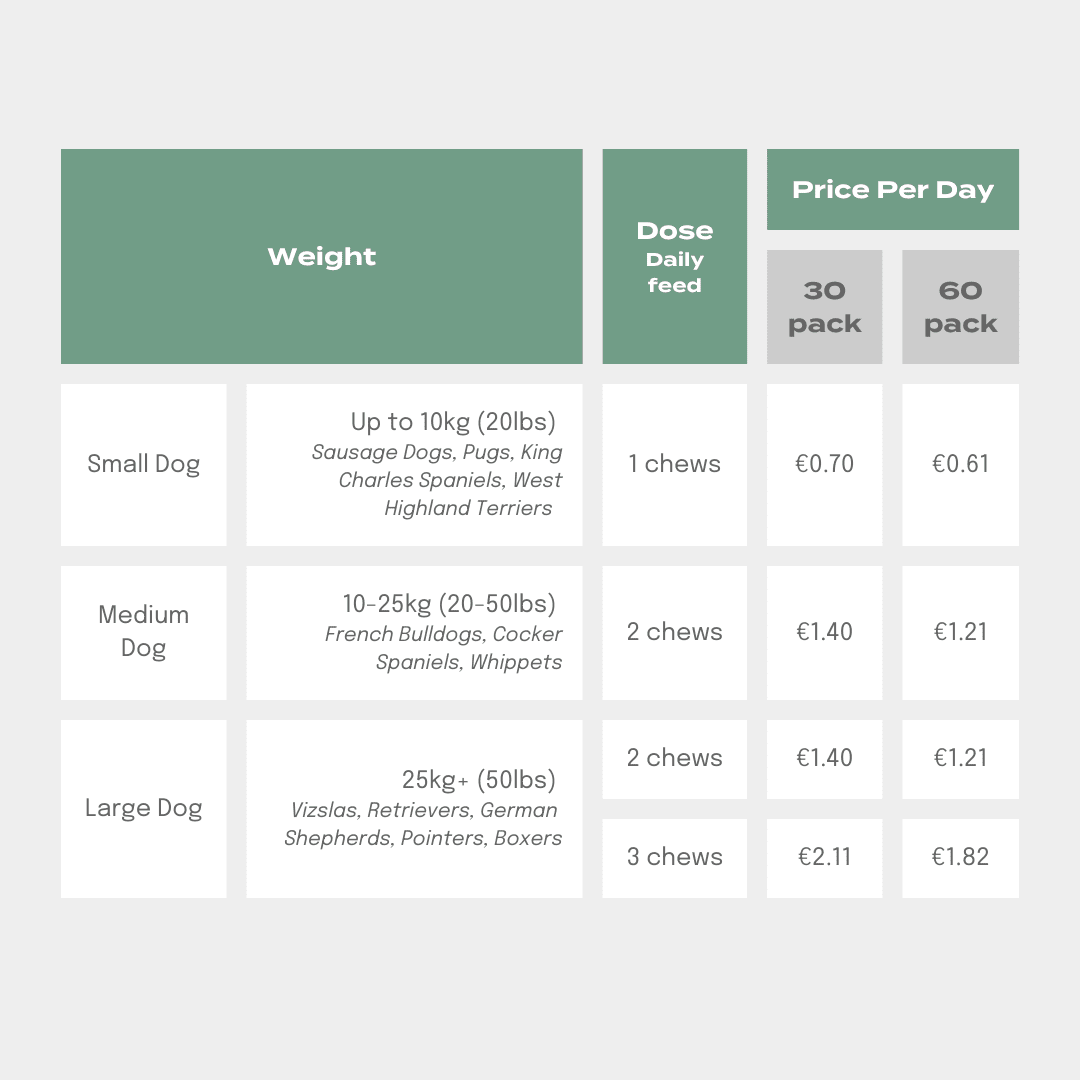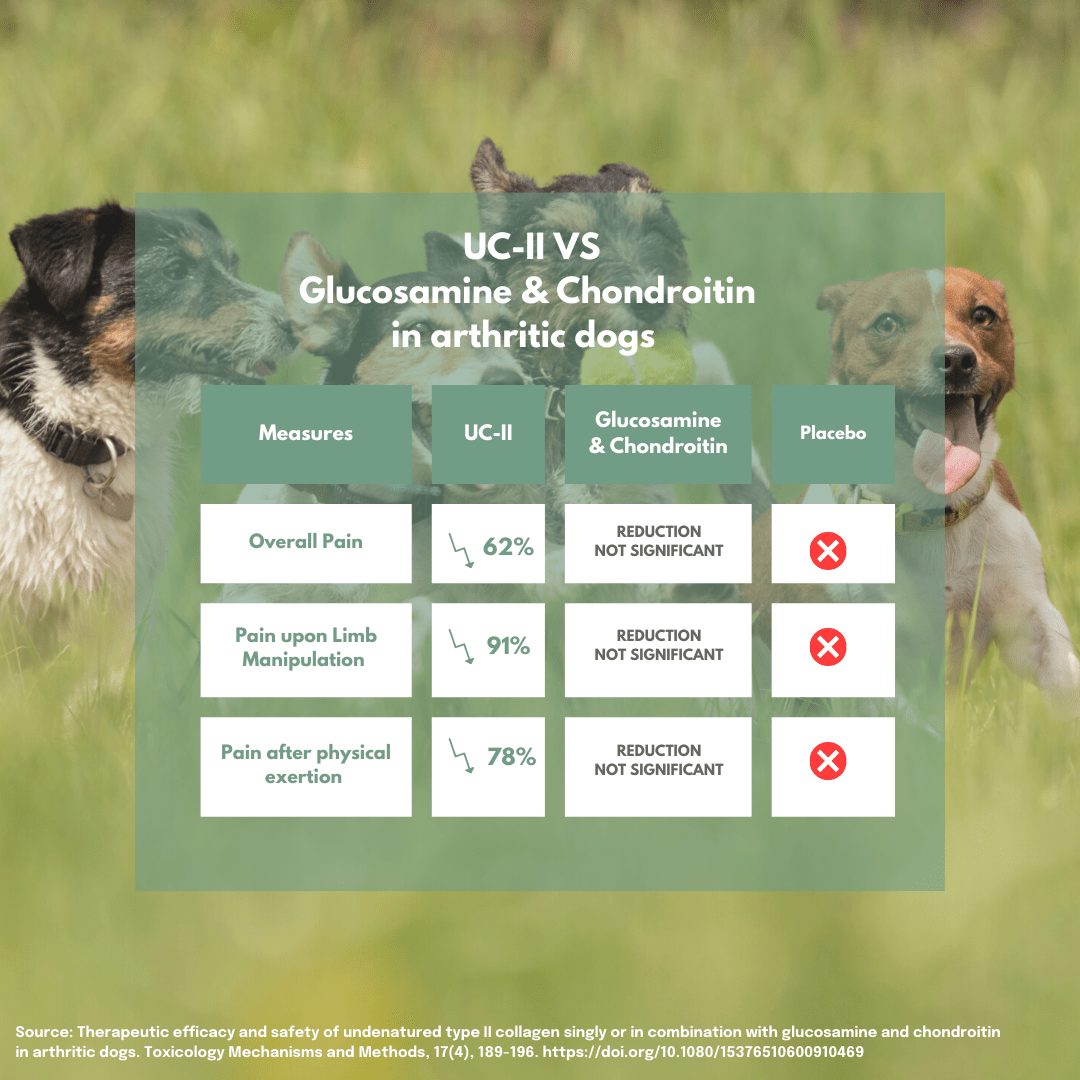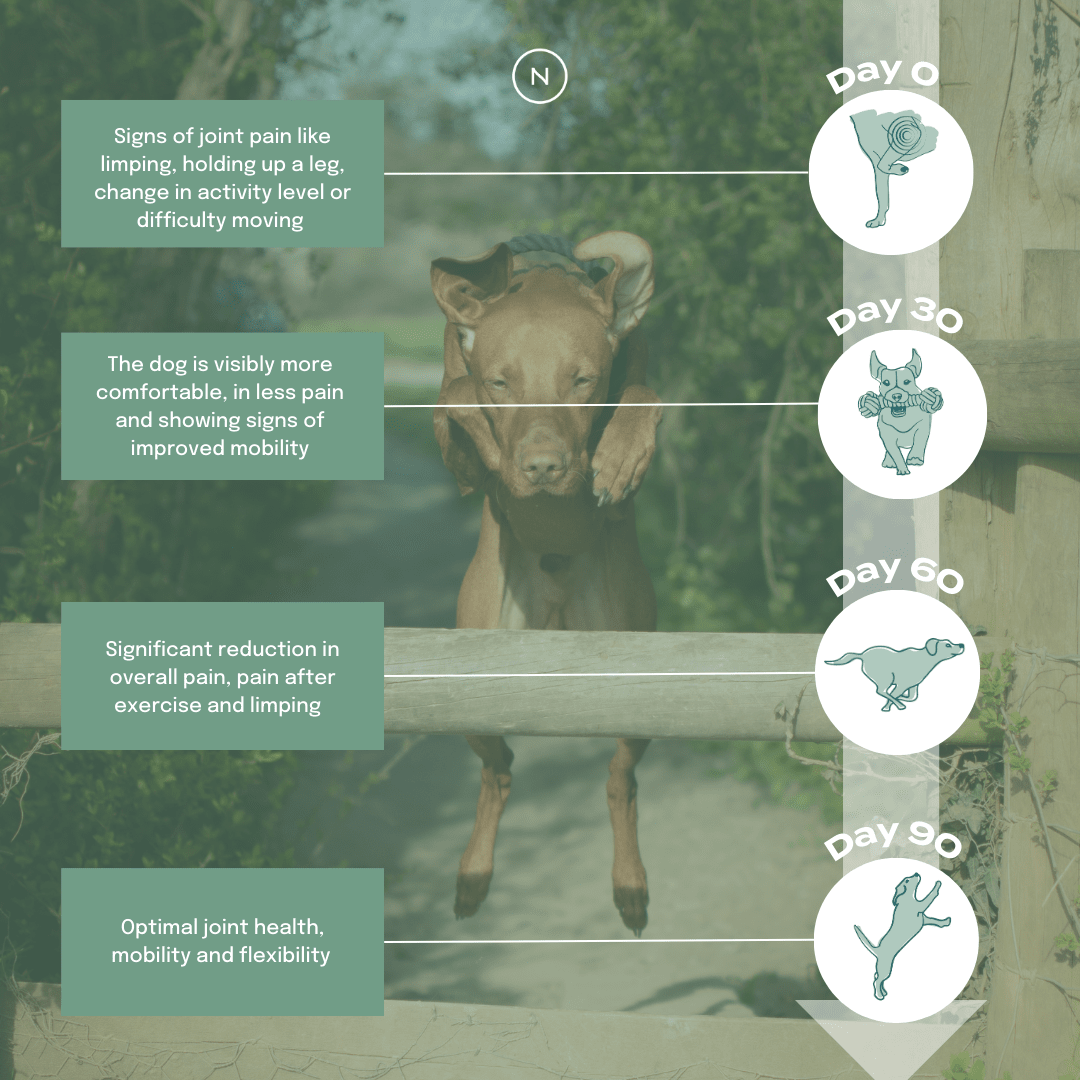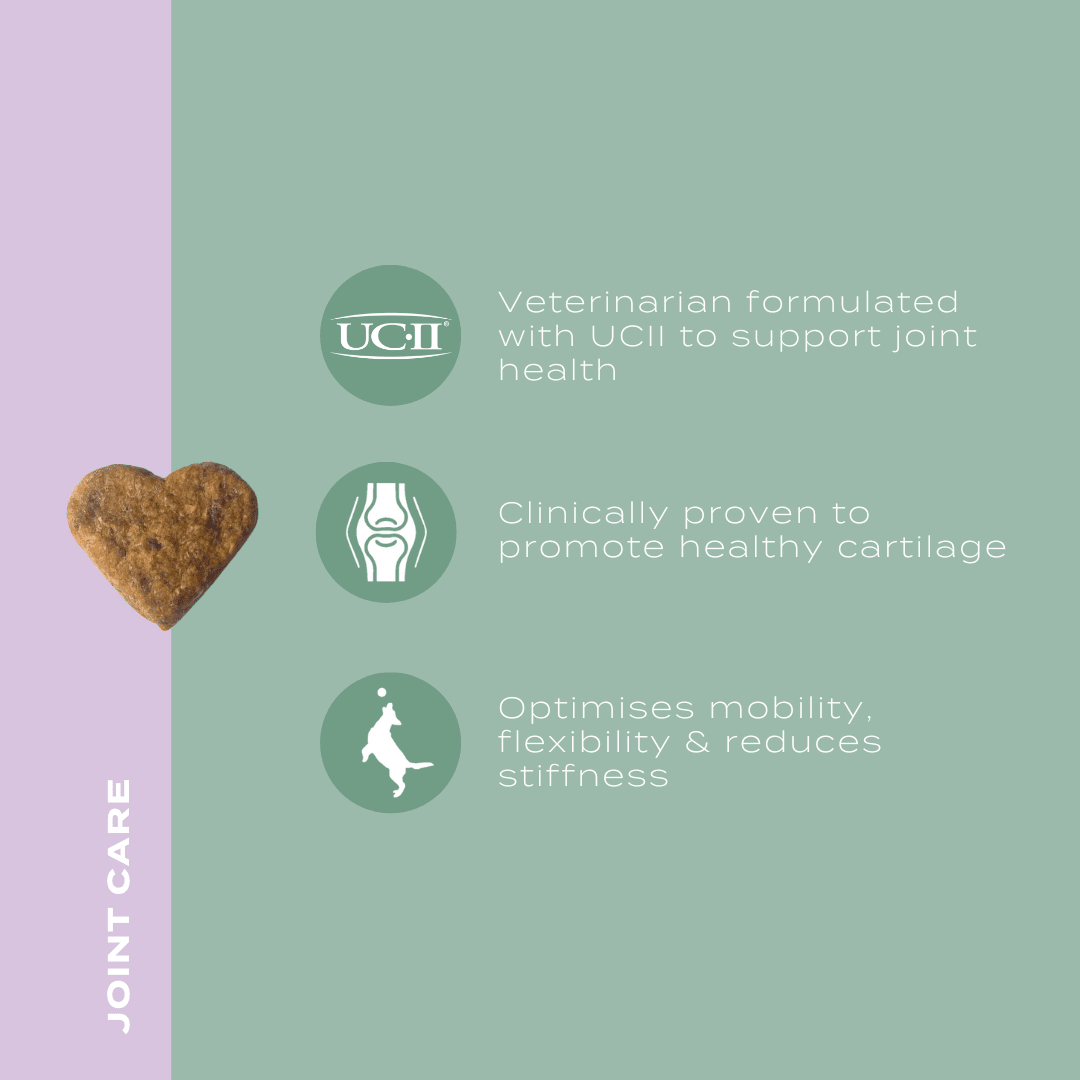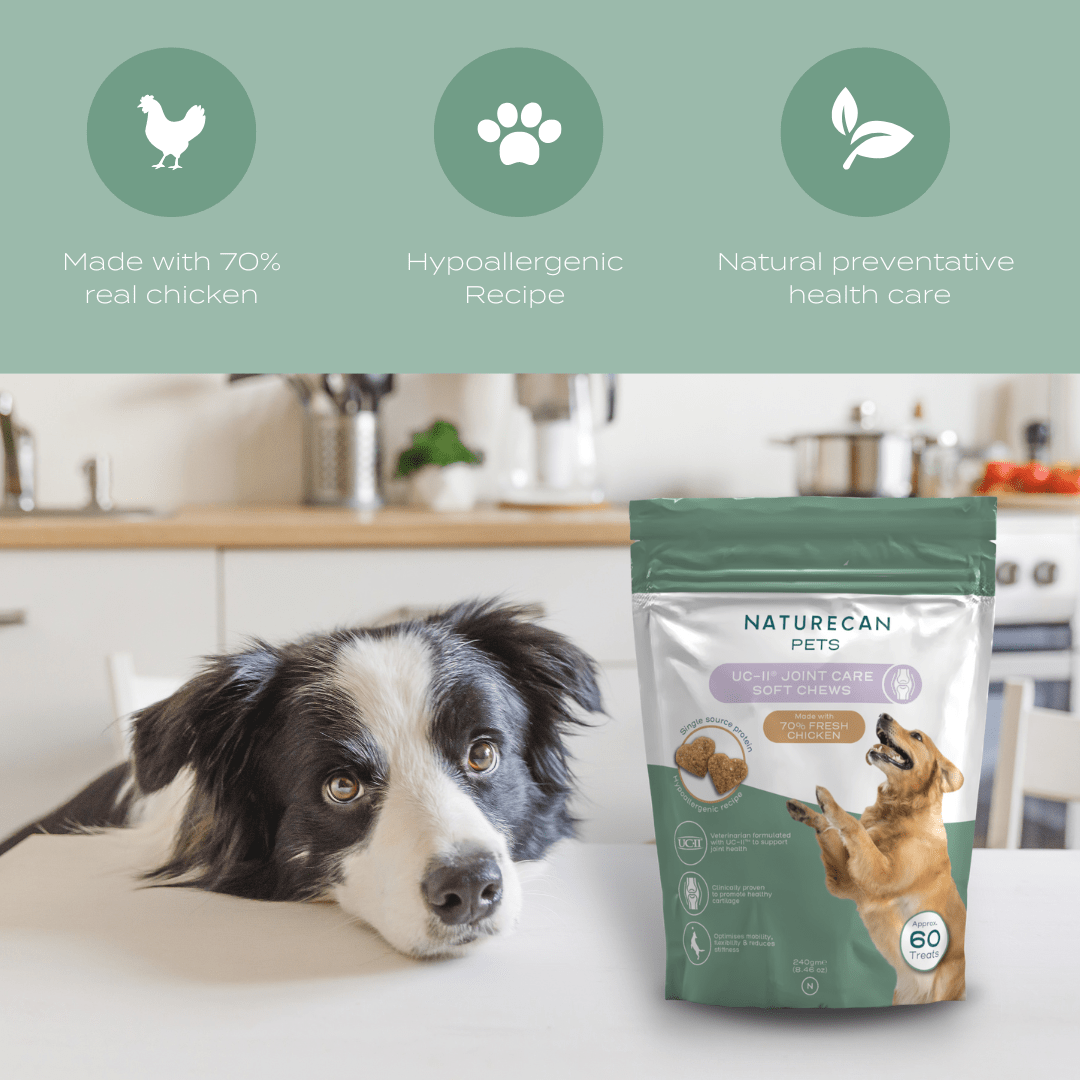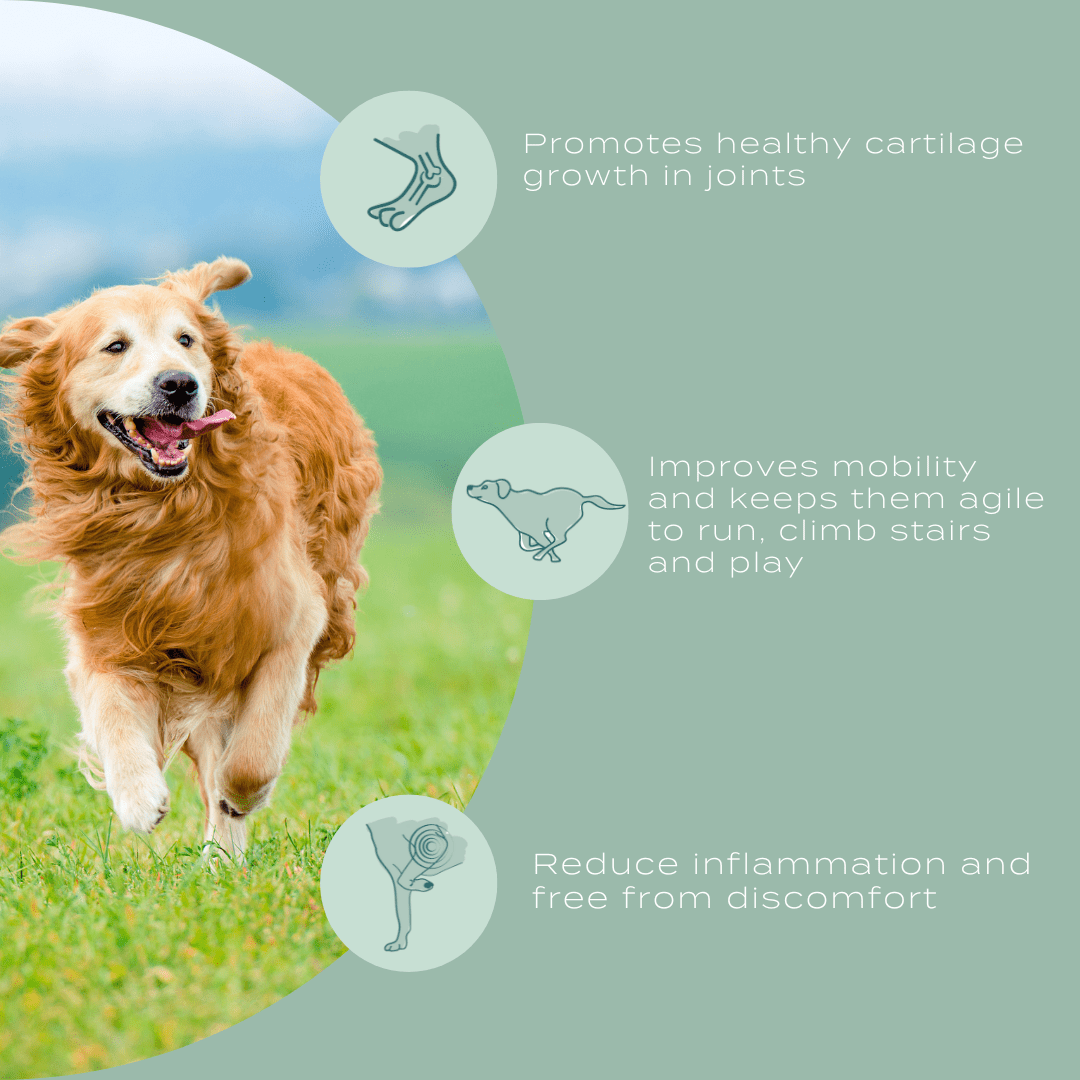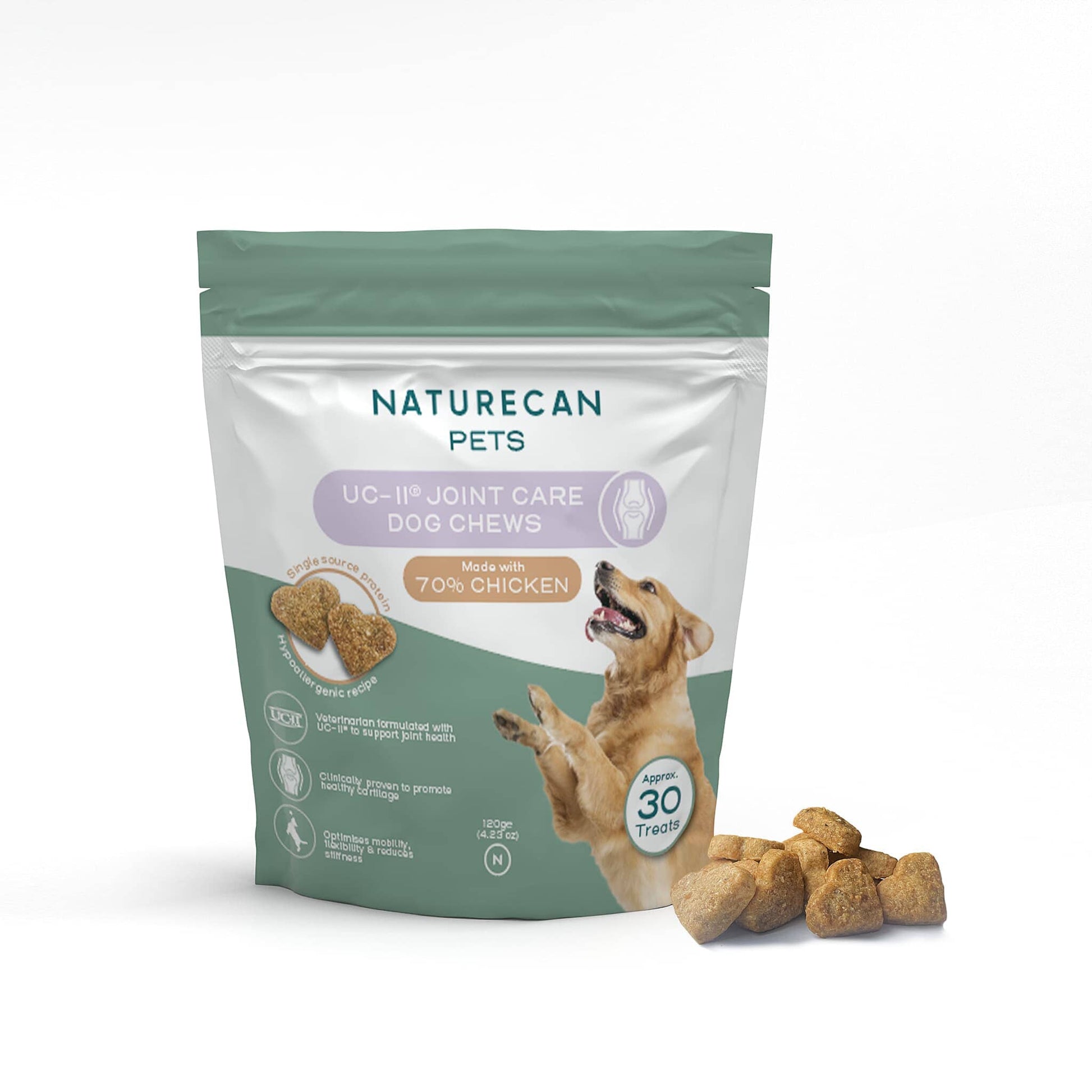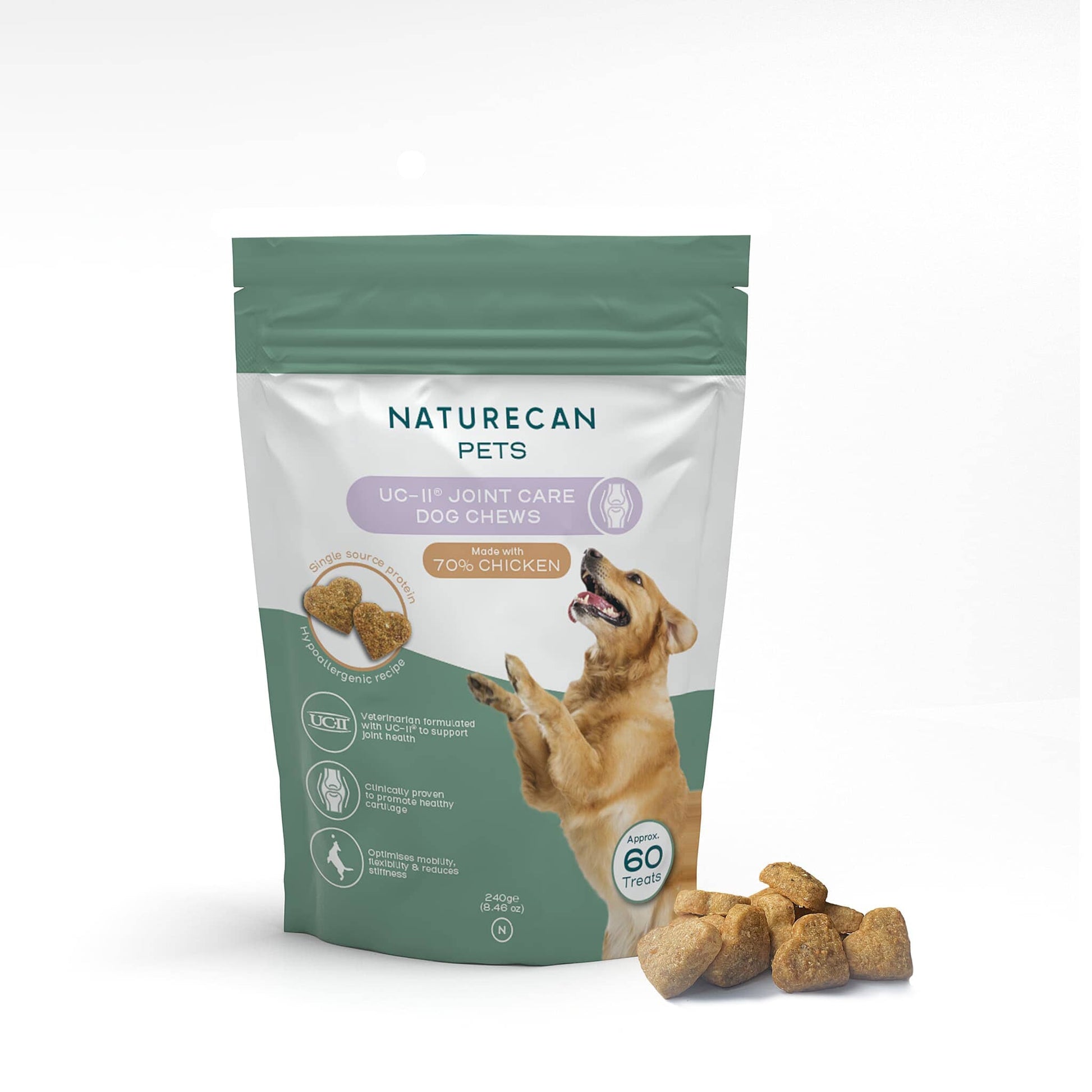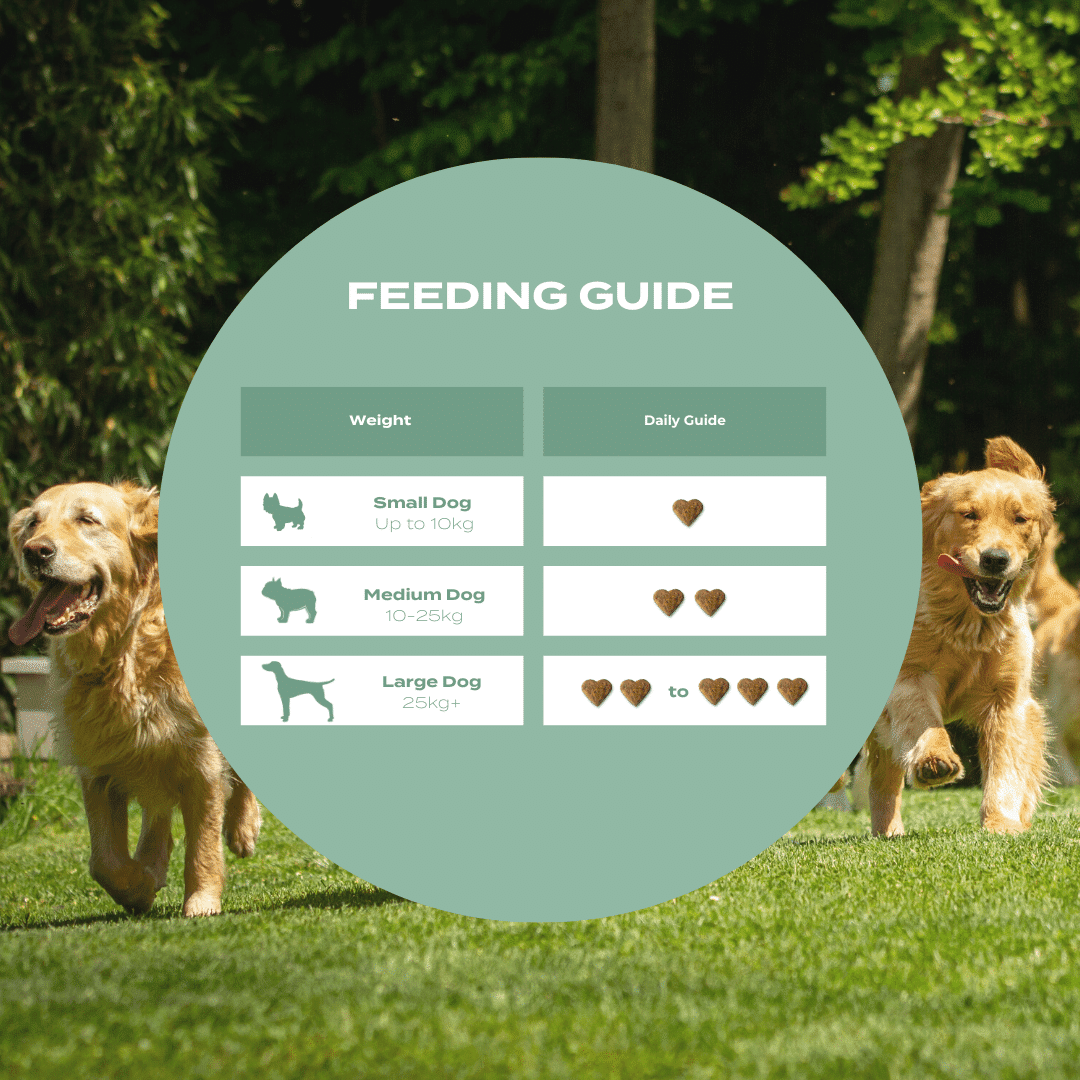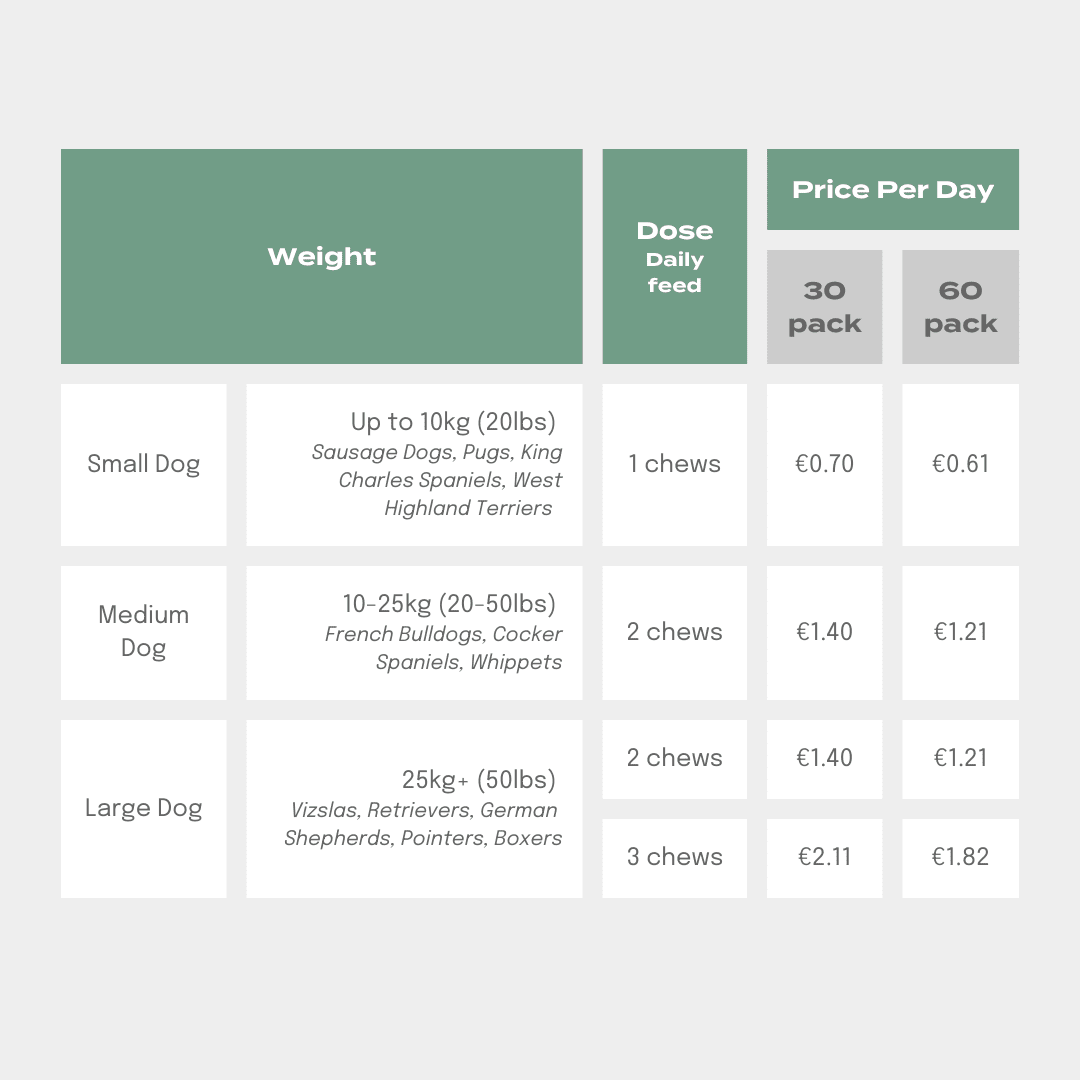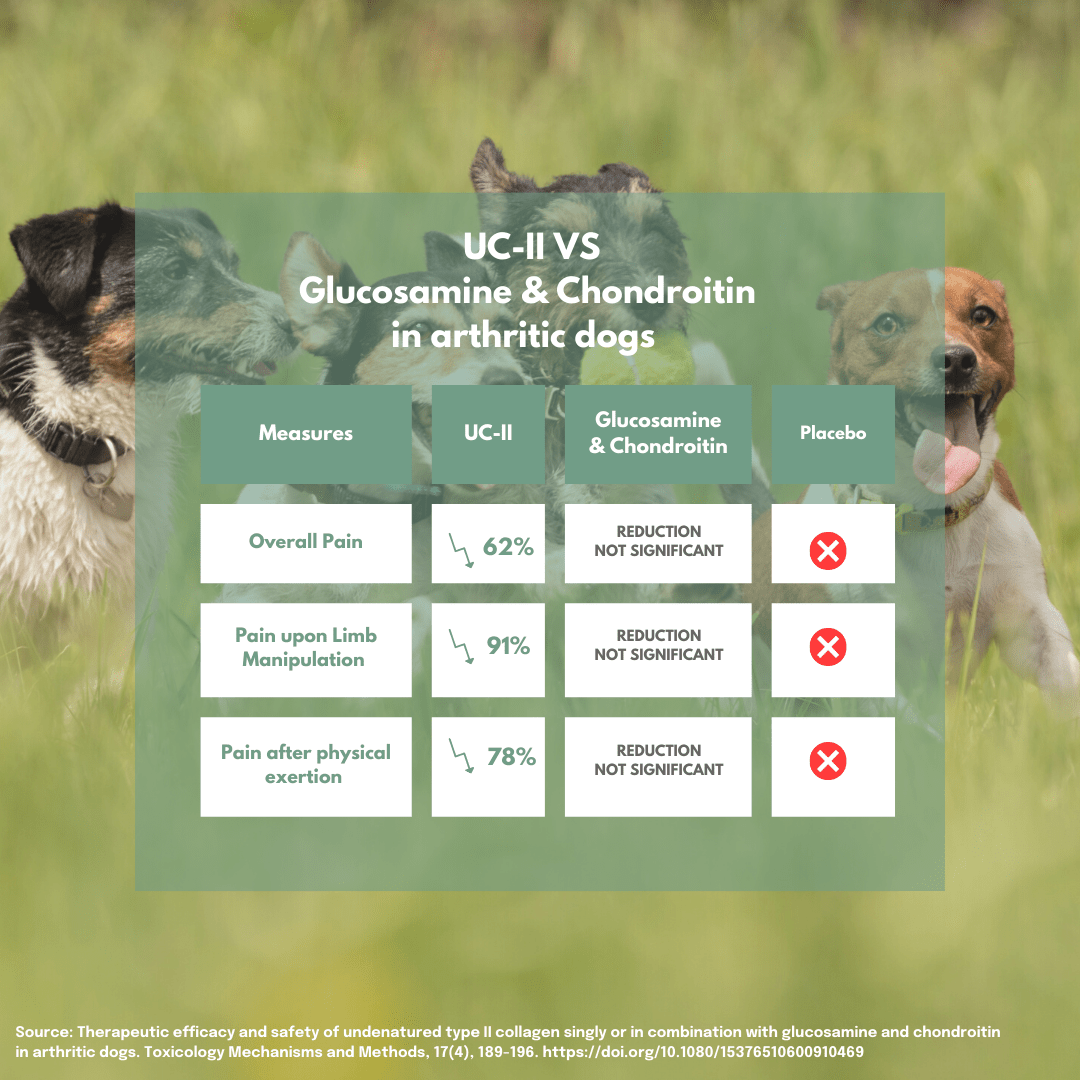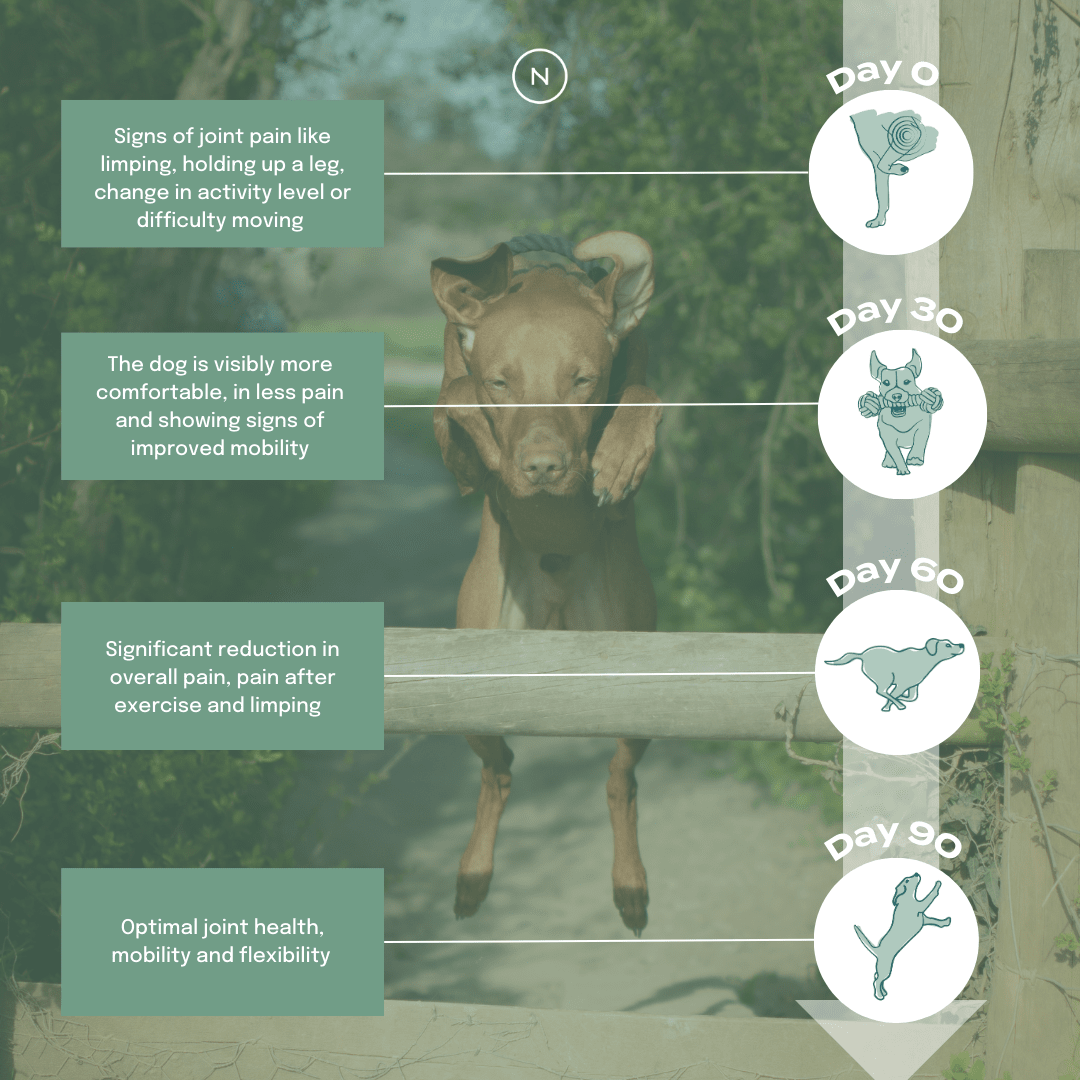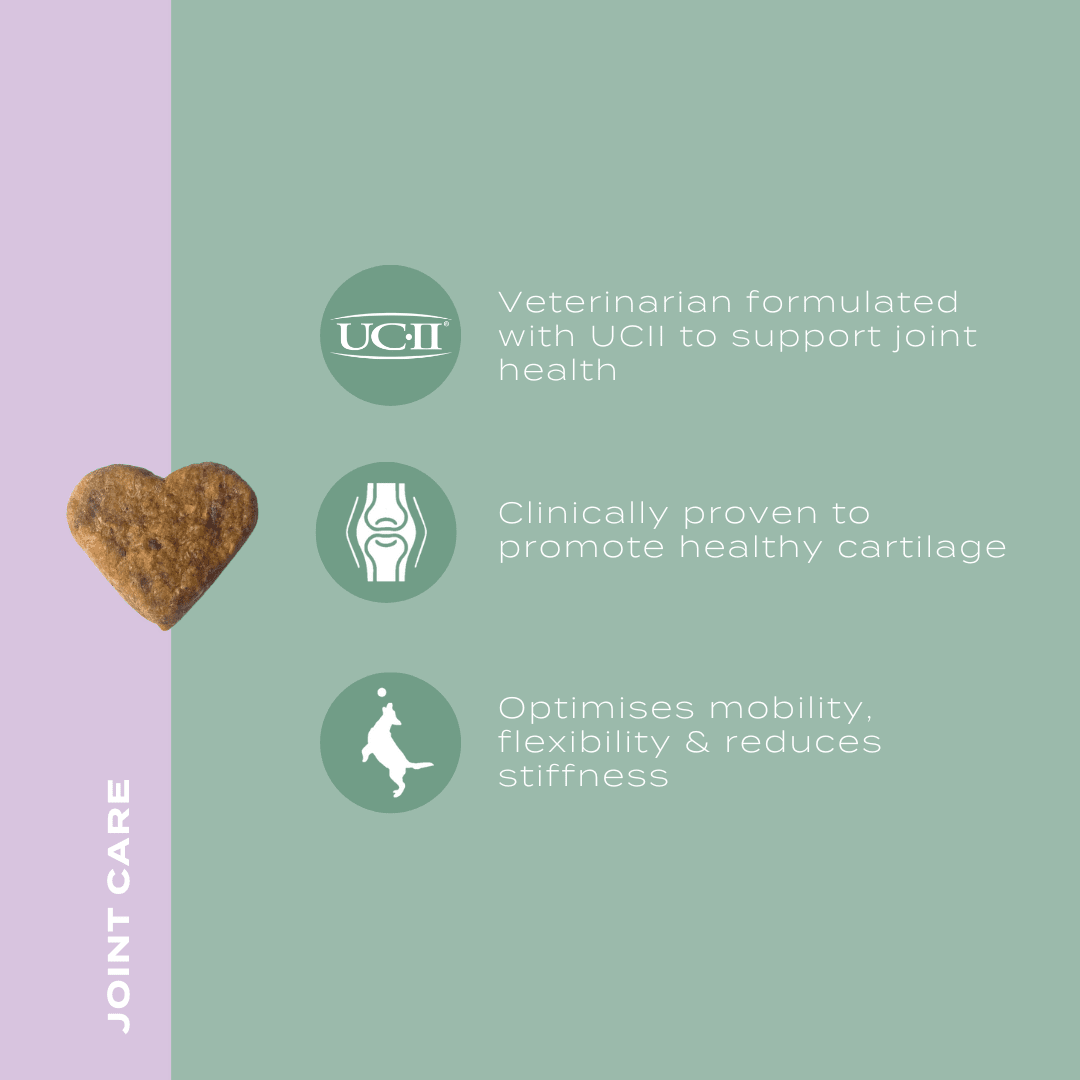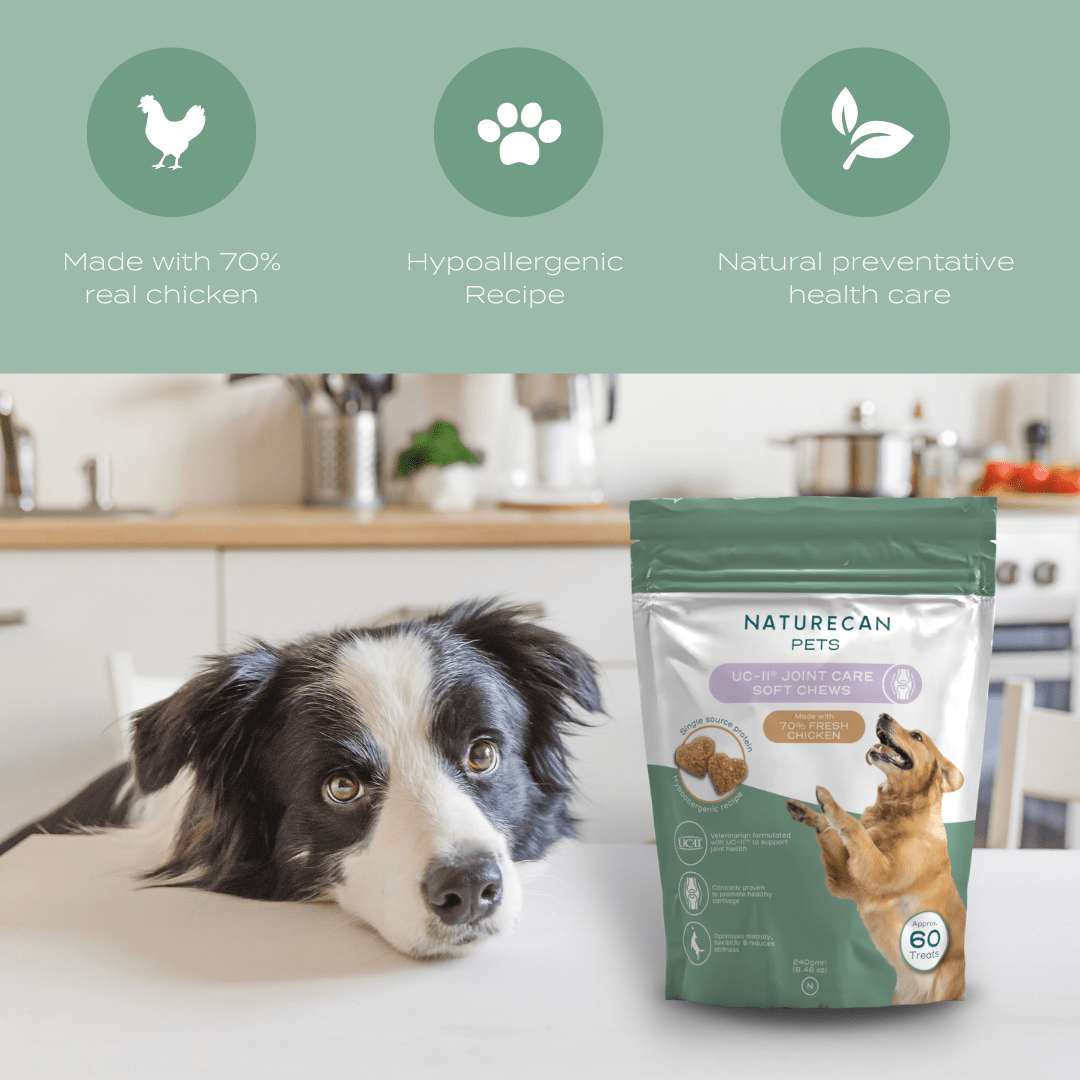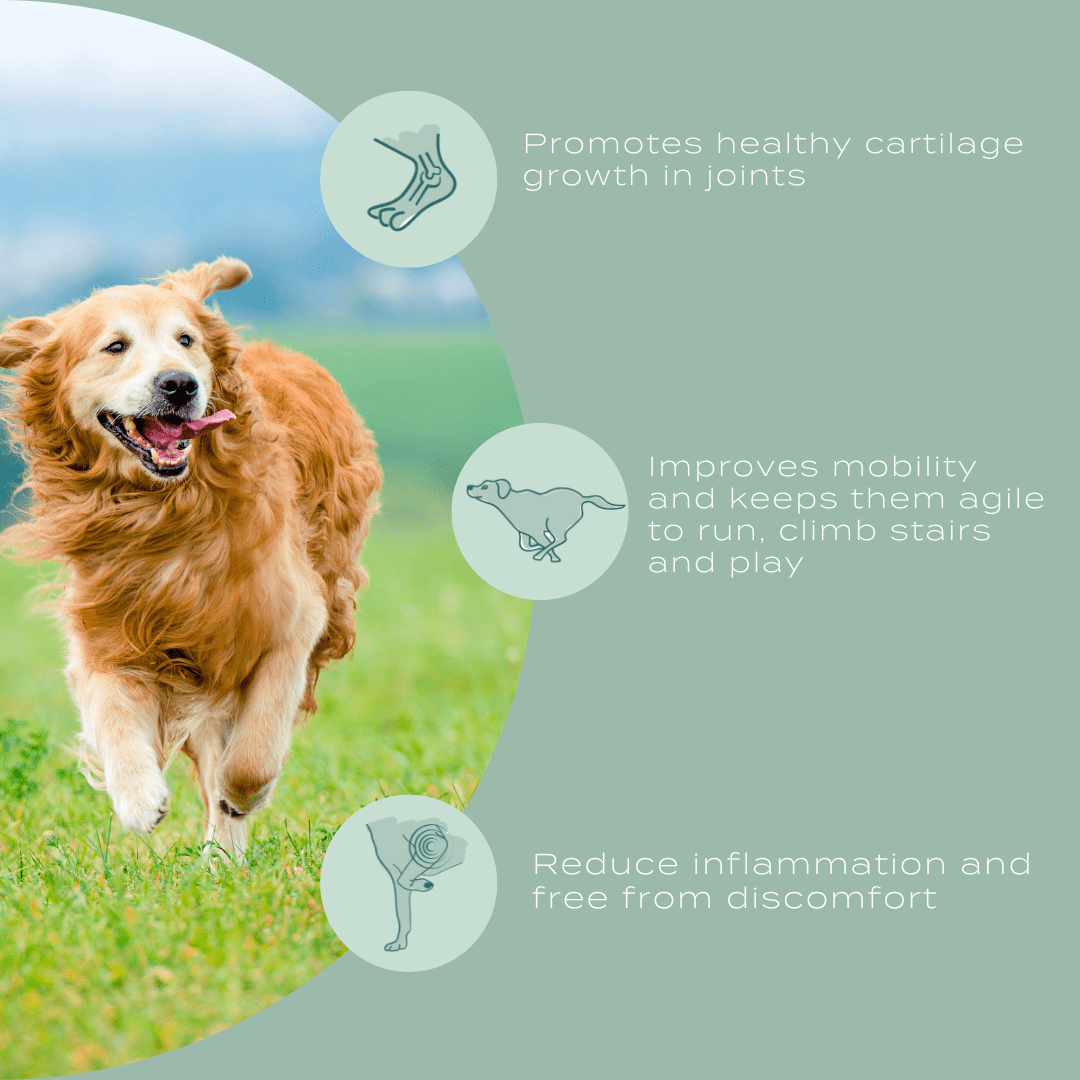UC-II® Joint Care Dog Chews
UC-II® Joint Care Dog Chews
Out of stock
Couldn't load pickup availability
Third Party Testing
Buy One Plant One
When zoomies require a little support!
Key benefits
- UC-II® is a clinically proven ingredient to reduce pain and improve mobility and flexibility
- Promotes and rebuilds healthy cartilage to aid joint health
- Significantly proven to reduce pain caused by arthritis in dogs
- Made with delicious 70% chicken, potato and vegetable
- Hypoallergenic recipe
- No filler ingredients or article flavours
- Available in two pack sizes - 30 & 60 treat bags℮
Product Overview
These tasty dog joint supplements help reduce joint discomfort by working with your body to reduce inflammation and promote collagen production. This results in increased joint flexibility and mobility. If you want to help your senior dog move easier or prevent future joint concerns, these treats are ideal for keeping your dog agile and pain-free so they can run, jump, climb stairs, and engage in fun zoomies.
What is UC-II®?
UC-II® is a clinically proven ingredient formed of undenatured type II collagen derived from chicken sternum cartilage. Type II collagen is present in joint cartilage and is important for mechanical strength, gliding ability, and cushioning. To learn more, visit our blog.
Why should I give my dog UC-II®?
UC-II® promotes joint health by assisting in cartilage preservation and overall joint function. It is particularly relevant for dogs prone to joint problems or are getting older. Derived from natural sources, it is a compelling option if you prefer more natural and holistic approaches to supporting your dog's health.
Joint Care Dog Chews Dosage:

Feed as a treat before bedtime to allow the active ingredient (UC-II®) to work overnight.
One treat contains 20mg of UC-II®.
Always provide fresh and clean water for your pet.
Who are UC-II® dog chews for?
Regardless of your dog's age, these treats provide natural support to keep them agile and free from discomfort, so they can continue to run, jump, climb stairs, and engage in playful zoomies. They are great to keep your dog’s joints healthy or help to rebuild the cartilage in joints that are suffering.
Signs of Dog Joint Pain
As dog owners, we constantly want our dogs to be happy, confident, and active. They can experience joint pain for various reasons, including ageing, genetics, injuries, or underlying health conditions like dog arthritis. It's important to be attentive to your dog's behaviour and look for signs indicating joint pain. Common signs include:
-
Change in Activity Level: A decrease in overall activity, such as becoming disinterested in playtime or walks, may indicate joint pain. Often a change in activity level may be partnered with an increase in sleep. Another indicator can be the amount of time they can engage in exercise. As dogs age, even short bursts of activity can cause discomfort. Finally, a speed reduction could indicate dog mobility issues. Dogs with arthritis can find it difficult to move quickly as their joints are inflamed and stiff.
- Reluctance or Difficulty Moving: Dogs in pain may hesitate to move, especially if they know that movement causes discomfort. You may notice when your dog is inactive for some time, they are slow to get up and move. This is often a result of joint issues and stiffness. If your dog has trouble jumping onto furniture, climbing stairs, or navigating obstacles they previously handled easily, it could be due to joint pain.
- Limping or Favouring a Leg: If your dog is limping, holding up a leg, or favouring one side while walking, it could be a sign of joint discomfort or pain. Sometimes dogs may exhibit an altered or abnormal gait, such as a "bunny hopping" motion in the hind legs.
- Behavioural Changes: Joint pain can make dogs irritable or more sensitive. If your dog seems unusually grumpy or reacts negatively when touched in certain areas, it could be a response to pain. In severe cases, dogs might vocalise their feeling through whining, whimpering, or even yelping when moving or being touched.
